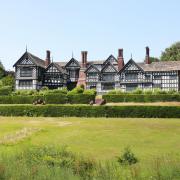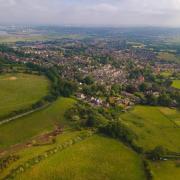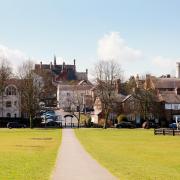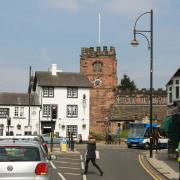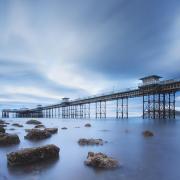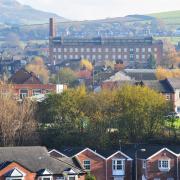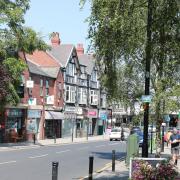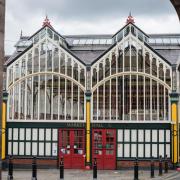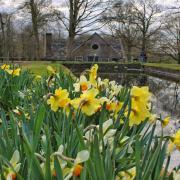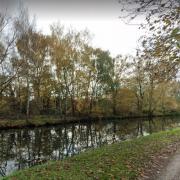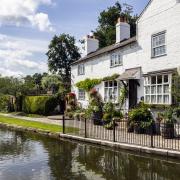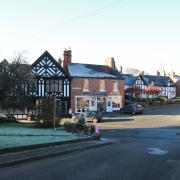Martin Pilkington discovers Nantwich’s colourful past on a tour of the town centre

There’s surely nobody better qualified to communicate the history of Nantwich than Herbert Rowsell. He founded the town’s Historical Society, established the Holly Holy Day commemoration of the 1644 Battle of Nantwich, now a fixture of its calendar, and was a leading light in setting up the excellent museum there in 1980.
As we tour the town his affection for the place is evident, and it is reciprocated too: time and again townsfolk stop to greet him with a cheerful but polite ‘Good morning sir.’ Mr Rowsell was headmaster of Nantwich and Acton Grammar School from 1968 to 1991 – is that a momentary flicker of fear about having handed in homework on some sexagenarian faces?
‘When I came here there was nothing much happening as regards marking the history here, so one day in 1969 I put a banner up asking anyone interested in forming a historical society to come to the school hall one Friday evening. About 70 turned up, and we started it then and there,’ he says.
There’s plenty of history to celebrate about Nantwich, with knowledge of some aspects increasing of late. ‘We’re now certain this was a Roman salt town, and though the roads suggested that, when I came here nobody was sure. There were other indications – I once had to appear at a coroner’s court held to rule on a farmer’s find of Roman coins – and since then a villa has been excavated near the river, so the settlement was probably more important in Roman times than previously thought.’

Nantwich’s Tudor heritage is far more visible. ‘In 1583 there was a great fire here that burned for 20 days. Queen Elizabeth I gave £1000 towards rebuilding the town, and timber from the Royal Forest of Delamere, as Nantwich was an important stopping point for troops en route to Chester, and from there to Ireland,’ Herbert explains.
‘In 1984 we had a big festival for the 400th anniversary of its rebuilding. The Duke of Gloucester came down to unveil the monument by the river to mark the occasion.’
Herbert proudly points out the splendours of the wealth of black and white buildings in the centre – The Crown Hotel, The Queen’s Aid House, and perhaps most beautifully 46 and 48 High Street. ‘The late Jim Edleston, the architect who restored the building, said the floor originally wasn’t straight, so he left it like that. On the corner of Castle Street it may have been built on soft ground above what had been a moat.’
The great medieval survival in Nantwich is St Mary’s Church. ‘Betjeman reckoned it was one of the most satisfying 14th century churches in which to sit,’ says Herbert. He points out the superb carved misericord pews, the original rear part full of character and characters. ‘Look at those finely carved Saxon heads either side of a far more roughly done king’s head, perhaps Henry III; and the animals – a pig, dog, and that bird with a friar’s head coming out of its rear end – hence parson’s nose!’ he says with some glee.

An earlier historian pronounced that St Mary’s was a mere chapel of ease for a more significant foundation at Acton, but Mr Rowsell, who is currently preparing a paper on the subject, disagrees strongly. ‘This was never a chapel of ease, far too grand with its stone ceiling. This was done by moneyed people, possibly with funds brought back from the Crusades, thinking it might become the centre of a diocese.’
That honour went to Chester, and Nantwich remained and remains a quiet market town, but on January 25, 1644 it was pivotal to our national history, when Parliamentary forces defeated the Royalists there. ‘It was the turning point of the Civil War,’ claims Mr Rowsell. ‘When Charles lost Nantwich he lost the North West and most importantly Chester, vital as his only entry point for help from Ireland.
‘When we set up the Historical Society we wanted to do something tangible and one member suggested we commemorate the battle of Nantwich. We started in 1971 with a simple wreath laying, but since then what we call Holly Holy Day has been marked with a re-enactment on Mill Island.’
Across the cut of the River Weaver from Mill Island stands a monument to the Great Fire and beyond it a graceful Georgian bridge, leading to the much older Welsh Row area. ‘It was called that as the Welsh had to stop there, they weren’t allowed into the town when they came to buy salt,’ he explains.

Back in the town centre, Mr Rowsell stops to indicate a plaque in the pavement outside one of the amazing Tudor buildings, a marker on the town’s historical trail: “Nantwich a Hidden Treasure” it reads. Thanks to Mr Rowsell and a good few of his friends and colleagues, it’s not so hidden nowadays.




